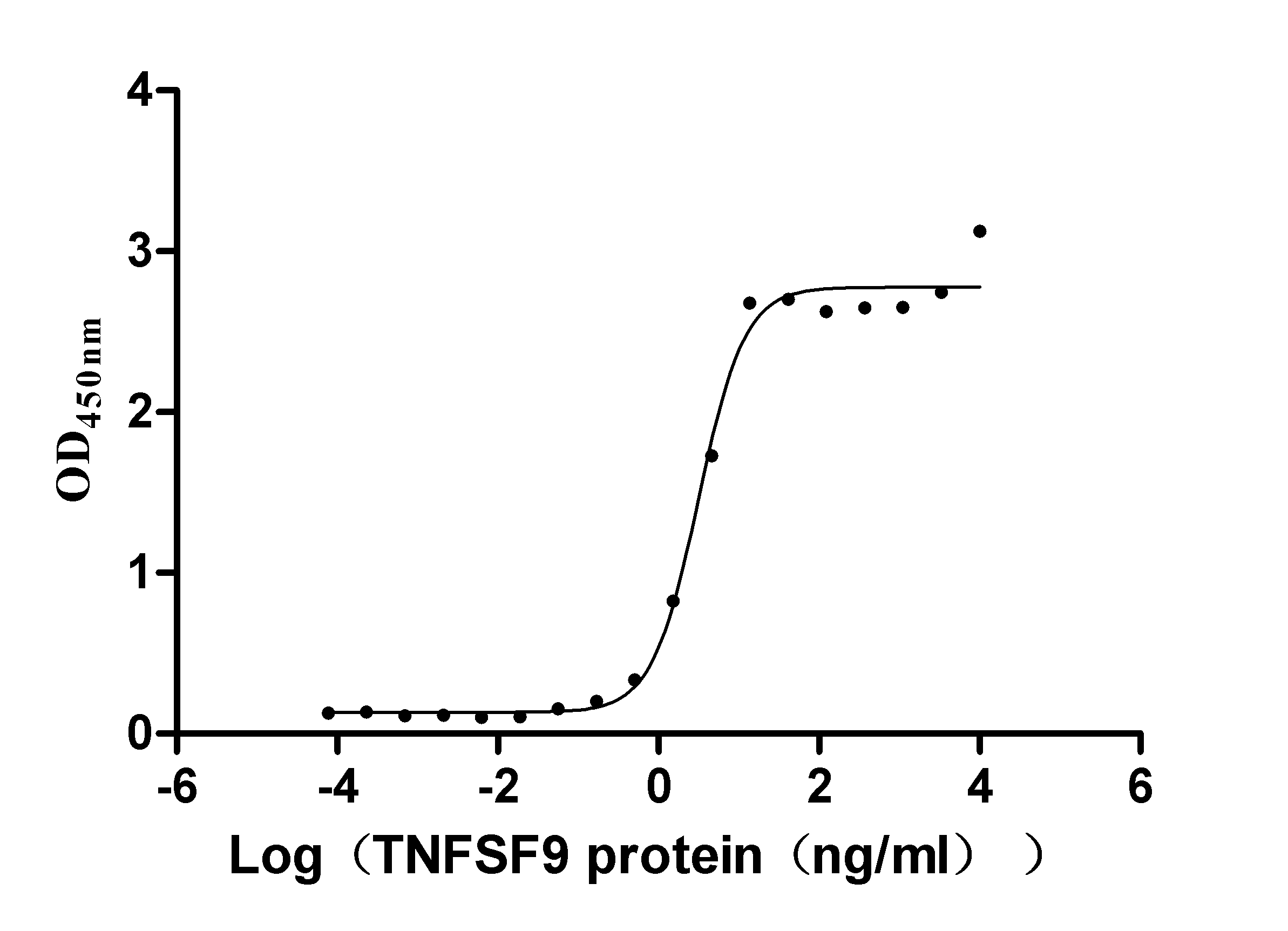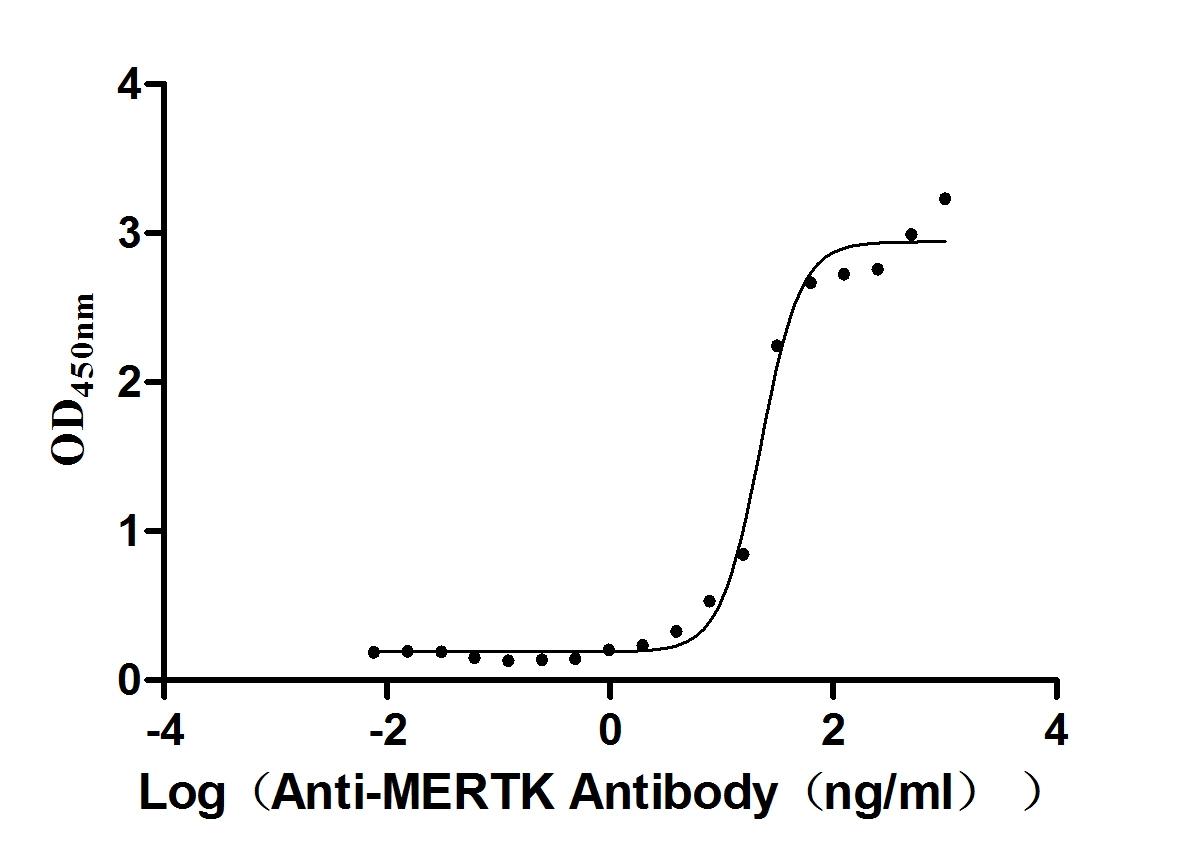Recombinant Human NAD (+) hydrolase SARM1 (SARM1)
-
货号:CSB-YP750971HU
-
规格:
-
来源:Yeast
-
其他:
-
货号:CSB-EP750971HU
-
规格:
-
来源:E.coli
-
其他:
-
货号:CSB-EP750971HU-B
-
规格:
-
来源:E.coli
-
共轭:Avi-tag Biotinylated
E. coli biotin ligase (BirA) is highly specific in covalently attaching biotin to the 15 amino acid AviTag peptide. This recombinant protein was biotinylated in vivo by AviTag-BirA technology, which method is BriA catalyzes amide linkage between the biotin and the specific lysine of the AviTag.
-
其他:
-
货号:CSB-MP750971HU
-
规格:
-
来源:Mammalian cell
-
其他:
产品详情
-
纯度:>85% (SDS-PAGE)
-
基因名:SARM1
-
Uniprot No.:
-
别名:FLJ36296; KIAA0524; MyD88-5; SAM and ARM-containing protein; SAM domain-containing protein 2; SAMD2; SARM 1; SARM1; SARM1_HUMAN; Sterile alpha and Armadillo repeat protein; sterile alpha and HEAT/Armadillo motif protein; ortholog of Drosophila; sterile alpha and HEAT/Armadillo motifs-containing protein; sterile alpha and TIR motif containing 1; Sterile alpha and TIR motif-containing protein 1; Sterile alpha and TIR motifs-containing protein 1; Sterile alpha motif domain-containing protein 2; Tir-1 homolog
-
种属:Homo sapiens (Human)
-
蛋白长度:Full Length of Mature Protein
-
表达区域:28-724
-
氨基酸序列LAV PGPDGGGGTG PWWAAGGRGP REVSPGAGTE VQDALERALP ELQQALSALK QAGGARAVGA GLAEVFQLVE EAWLLPAVGR EVAQGLCDAI RLDGGLDLLL RLLQAPELET RVQAARLLEQ ILVAENRDRV ARIGLGVILN LAKEREPVEL ARSVAGILEH MFKHSEETCQ RLVAAGGLDA VLYWCRRTDP ALLRHCALAL GNCALHGGQA VQRRMVEKRA AEWLFPLAFS KEDELLRLHA CLAVAVLATN KEVEREVERS GTLALVEPLV ASLDPGRFAR CLVDASDTSQ GRGPDDLQRL VPLLDSNRLE AQCIGAFYLC AEAAIKSLQG KTKVFSDIGA IQSLKRLVSY STNGTKSALA KRALRLLGEE VPRPILPSVP SWKEAEVQTW LQQIGFSKYC ESFREQQVDG DLLLRLTEEE LQTDLGMKSG ITRKRFFREL TELKTFANYS TCDRSNLADW LGSLDPRFRQ YTYGLVSCGL DRSLLHRVSE QQLLEDCGIH LGVHRARILT AAREMLHSPL PCTGGKPSGD TPDVFISYRR NSGSQLASLL KVHLQLHGFS VFIDVEKLEA GKFEDKLIQS VMGARNFVLV LSPGALDKCM QDHDCKDWVH KEIVTALSCG KNIVPIIDGF EWPEPQVLPE DMQAVLTFNG IKWSHEYQEA TIEKIIRFLQ GRSSRDSSAG SDTSLEGAAP MGPT
-
蛋白标签:Tag type will be determined during the manufacturing process.
The tag type will be determined during production process. If you have specified tag type, please tell us and we will develop the specified tag preferentially. -
产品提供形式:Lyophilized powder
Note: We will preferentially ship the format that we have in stock, however, if you have any special requirement for the format, please remark your requirement when placing the order, we will prepare according to your demand. -
复溶:We recommend that this vial be briefly centrifuged prior to opening to bring the contents to the bottom. Please reconstitute protein in deionized sterile water to a concentration of 0.1-1.0 mg/mL.We recommend to add 5-50% of glycerol (final concentration) and aliquot for long-term storage at -20℃/-80℃. Our default final concentration of glycerol is 50%. Customers could use it as reference.
-
储存条件:Store at -20°C/-80°C upon receipt, aliquoting is necessary for mutiple use. Avoid repeated freeze-thaw cycles.
-
保质期:The shelf life is related to many factors, storage state, buffer ingredients, storage temperature and the stability of the protein itself.
Generally, the shelf life of liquid form is 6 months at -20°C/-80°C. The shelf life of lyophilized form is 12 months at -20°C/-80°C. -
货期:Delivery time may differ from different purchasing way or location, please kindly consult your local distributors for specific delivery time.Note: All of our proteins are default shipped with normal blue ice packs, if you request to ship with dry ice, please communicate with us in advance and extra fees will be charged.
-
注意事项:Repeated freezing and thawing is not recommended. Store working aliquots at 4°C for up to one week.
-
Datasheet :Please contact us to get it.
相关产品
靶点详情
-
功能:NAD(+) hydrolase, which plays a key role in axonal degeneration following injury by regulating NAD(+) metabolism. Acts as a negative regulator of MYD88- and TRIF-dependent toll-like receptor signaling pathway by promoting Wallerian degeneration, an injury-induced form of programmed subcellular death which involves degeneration of an axon distal to the injury site. Wallerian degeneration is triggered by NAD(+) depletion: in response to injury, SARM1 is activated and catalyzes cleavage of NAD(+) into ADP-D-ribose (ADPR), cyclic ADPR (cADPR) and nicotinamide; NAD(+) cleavage promoting cytoskeletal degradation and axon destruction. Also able to hydrolyze NADP(+), but not other NAD(+)-related molecules. Can activate neuronal cell death in response to stress. Regulates dendritic arborization through the MAPK4-JNK pathway. Involved in innate immune response: inhibits both TICAM1/TRIF- and MYD88-dependent activation of JUN/AP-1, TRIF-dependent activation of NF-kappa-B and IRF3, and the phosphorylation of MAPK14/p38.
-
基因功能参考文献:
- we identify a physical interaction between the autoinhibitory N terminus and the TIR domain of SARM1, revealing a previously unrecognized direct connection between these domains that we propose mediates autoinhibition and activation upon injury. PMID: 27671644
- Active nerve degeneration requires SARM1 and MAP kinases, including DLK, while the NAD+ synthetic enzyme NMNAT2 prevents degeneration. PMID: 26844829
- Data show that sterile alpha- and armadillo-motif-containing protein (SARM) modulates MyD88 protein-mediated Toll-like receptors (TLRs) activation through BB-loop dependent interleukin-1 receptor (TIR) TIR-TIR interactions. PMID: 26592460
- These results indicate that association of PINK1 with SARM1 and TRAF6 is an important step for mitophagy. PMID: 23885119
- The innate immunity adaptor SARM translocates to the nucleus to stabilize lamins and prevent DNA fragmentation in response to pro-apoptotic signaling. PMID: 23923041
- Rapid Wallerian degeneration requires the pro-degenerative molecules SARM1. PMID: 24840802
- Data found that the UXT isoforms elicit dual opposing regulatory effects on SARM-induced apoptosis. PMID: 24021647
- SARM overexpression caused mitochondrial clustering which has also been observed in several cell death phenomenon. PMID: 23175186
- The N-terminal 27 amino acids (S27) of SARM, which is hydrophobic and polybasic, acts as a mitochondria-targeting signal sequence, associating SARM to the mitochondria. The S27 peptide has an inherent ability to bind to lipids and mitochondria. PMID: 22145856
- SARM-mediated inhibition may not be exclusively directed at TRIF or MyD88, but that SARM may also directly inhibit MAPK phosphorylation PMID: 20306472
- Candidate gene in the onset of hereditary infectious/inflammatory diseases. PMID: 15893701
- TIR adaptor SARM is a negative regulator of Toll-like receptor signaling. PMID: 16964262
- confirmed the co-localization of retinoschisin with Na/K ATPase and SARM1 in photoreceptors and bipolar cells of retina tissue PMID: 17804407
- SARM1 deficiencies may uncover unexpected similarities between the ways in which neurons and immune cells sense and respond to danger. PMID: 18089857
显示更多
收起更多
-
亚细胞定位:Cytoplasm. Cell projection, axon. Cell projection, dendrite. Cell junction, synapse. Mitochondrion.
-
组织特异性:Predominantly expressed in brain, kidney and liver. Expressed at lower level in placenta.
-
数据库链接:
HGNC: 17074
OMIM: 607732
KEGG: hsa:23098
STRING: 9606.ENSP00000406738
UniGene: Hs.743510
Most popular with customers
-
Recombinant Human Pro-neuregulin-1, membrane-bound isoform (NRG1), partial (Active)
Express system: Mammalian cell
Species: Homo sapiens (Human)
-
Recombinant Human Tumor necrosis factor ligand superfamily member 9 (TNFSF9), partial (Active)
Express system: Mammalian cell
Species: Homo sapiens (Human)
-
Recombinant Human Insulin growth factor-like family member 1 (IGFL1) (Active)
Express system: Mammalian cell
Species: Homo sapiens (Human)
-
Recombinant Human Poliovirus receptor (PVR) (I340M), partial (Active)
Express system: Mammalian cell
Species: Homo sapiens (Human)
-
Recombinant Mouse Tyrosine-protein kinase Mer (Mertk), partial (Active)
Express system: Mammalian cell
Species: Mus musculus (Mouse)
-
Recombinant Human Cannabinoid receptor 1 (CNR1)-VLPs (Active)
Express system: Mammalian cell
Species: Homo sapiens (Human)
-
Recombinant Human Interleukin-17A (IL17A) (T26A) (Active)
Express system: Baculovirus
Species: Homo sapiens (Human)
-
Recombinant Human Carcinoembryonic antigen-related cell adhesion molecule 6 (CEACAM6) (Active)
Express system: Mammalian cell
Species: Homo sapiens (Human)


-AC1.jpg)


-AC1.jpg)


-AC1.jpg)











